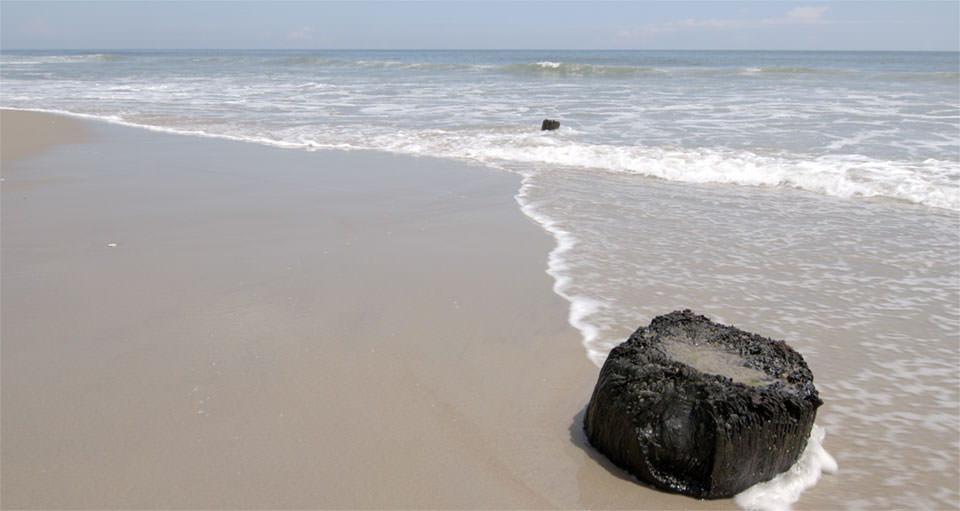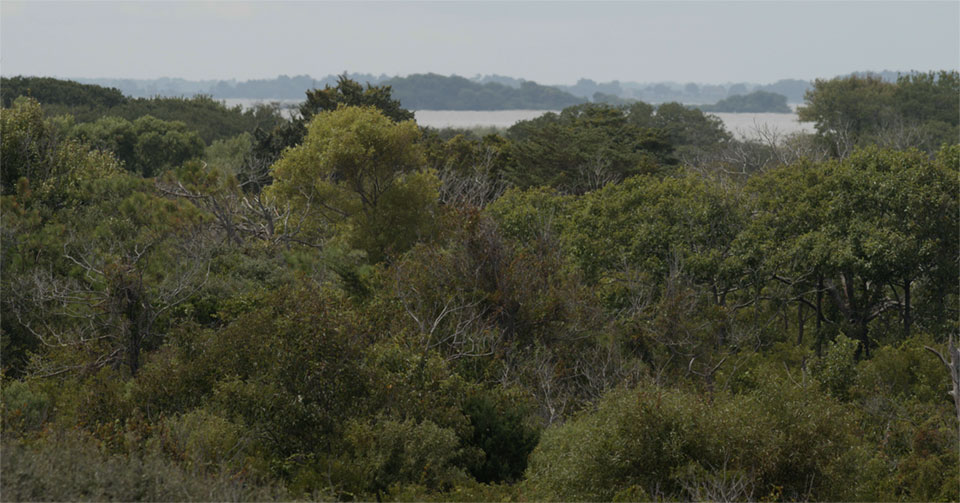What is a maritime forest?
Maritime forests protect our shorelines from ongoing movement of the coast.

These stumps are evidence that trees once grew here, but due to a constantly changing shoreline, they are now mostly submerged in the ocean.
Maritime forests are shoreline estuaries that grow along coastal barrier islands that support a great diversity of plants and animals. Many maritime forests in the United States remain largely untouched by commercial development and closely resemble the woodlands where Native Americans lived and early colonists settled hundreds of years ago. Trees, bushes, and other plants in maritime forests and estuaries withstand strong winds, periodic flooding, and salt spray. Many species of mammals and reptiles make the forests their home, and thousands of birds migrate to maritime forests each year.

Currituck Banks Reserve, on North Carolina's Outer Banks, is a maritime forest.
A good example of a maritime forest is the Currituck Banks Reserve, located on the Outer Banks of North Carolina. The western, ocean side of Currituck consists of sand dunes of beach grass and sea oats, which front a tightly woven canopy of shrub-like thickets of wax myrtle, holly, and stunted oaks. The canopy acts as a windscreen to protect the forest's less tolerant interior trees, often consisting of American holly, beach olive, ironwood, loblolly pine, red maple, and live oak. On the other side of the barrier island's maritime forest lies the estuary of Currituck Sound, where fresh water meets the ocean's salt water. This shallow intertidal area is home to the estuary's abundant flora and fauna.
Like all barrier islands, maritime forests are constantly changing and on the move. On Currituck, for example, one can see stumps of deciduous trees along the sandy beach. These trees were once in the center of the island, but due to the constantly changing shoreline, they are now mostly submerged in the ocean. Maritime forests, like all estuaries, are essential for storm protection. They also conserve important nutrients and groundwater.
Social